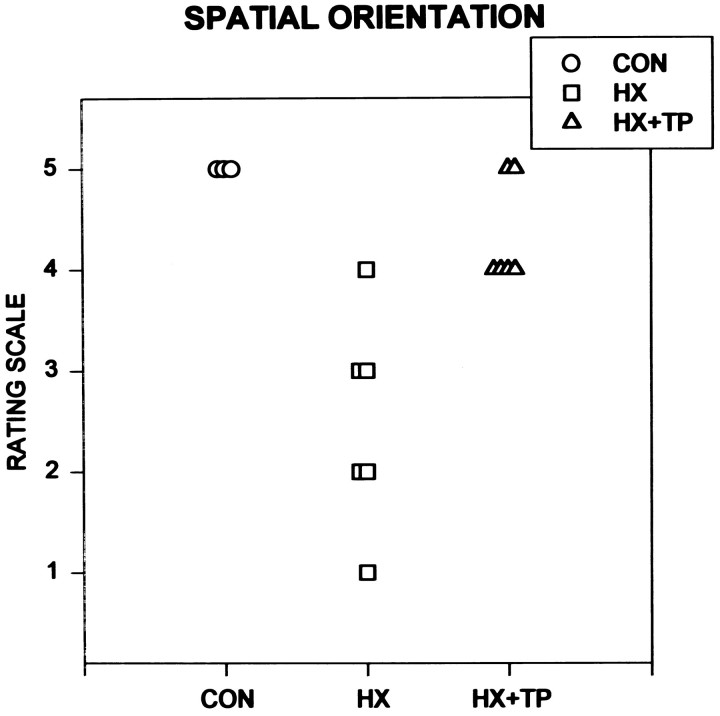Fig. 3.
Effect of neonatal cervical spinal cord injury on the ability to orient the body upright during the second postnatal week. Each symbol represents an individual animal in the specified group. As normal uninjured rats mature, they turn their bodies on an inclined board to orient their head upward by first moving their forelimbs and then realigning their body with their hindlimbs.HX rats develop alternative strategies for failed development of isolated forelimb movements and respond with movement substitutions to accomplish the goal. These aberrant movements are different from the pattern used by both CON andHX+TP rats. HX + TP rats, although delayed, develop the ability to turn themselves around on an inclined board, using a developmental sequence similar to that of normal rats rather than the substitutions used by HX rats.

